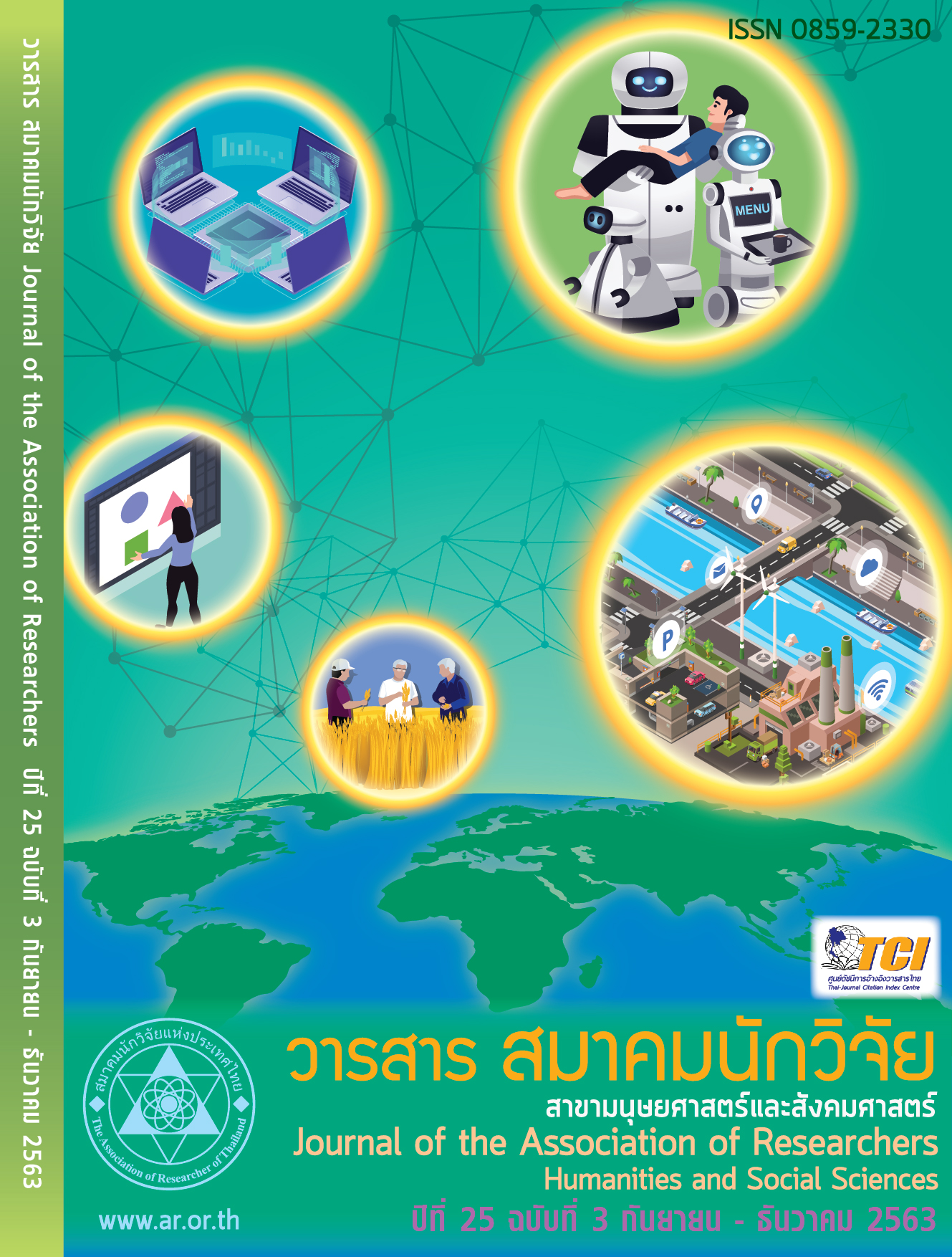Prediction of Energy Cost and Specific Energy Consumption in Manufacturing Process with Multiple Linear Regression Equation and Equivalent Unit
Main Article Content
Abstract
This research is about how to predict the energy cost and specific energy consumption (SEC) in the manufacturing process with multiple linear regression equations and equivalent units. The case study is the electronic factory that produces 4 types of electronic print circuit boards. To analyze this problem, the equivalent unit is applied to transfer production quantities of each type of electronic print circuit board into the equivalent production quantities. With data of quantities of electricity consumption, LPG consumption, and the equivalent production quantities for 4 types of the electronic print circuit board for 12 months in the past, the multiple linear regression techniques are applied to develop the prediction equations for energy consumption cost of electricity, LPG and total energy as
1) EEle (kWh) = (3.926 x 106) – (9.112 x 105) EQ1 + (8.287 x 105) EQ2 - (1.020 x 105) EQ3+ (5.461 x 105) EQ4 for energy consumption cost of electricity,
2) ETher (Liters) = (4.239 x 104) - (1.185 x 104) EQ1 + (2.868 x 104) EQ2 - (3.023 x 104) EQ3+ (1.722 x 104) EQ4 for energy consumption cost of LPG and 3) ETotal (MJ) = (1.526 x 107) - (3.596 x 106) EQ1 + (3.747 x 106) EQ2 - (1.172 x 106) EQ3+ (2.425 x 106) EQ4 for energy consumption cost of total energy. Finally, with the additional data of total equivalent production quantities for 4 types of electronic print circuit board, SEC equations of electricity, LPG and total energy are developed as 1) SECEle (kWh/1000 ft2) = 0.007 EQ2Total – 17.696 EQTotal + 17,492 for electricity, 2) SECTher(liters/1000 ft2) = 0.0005 EQ2Total - 0.9861 EQTotal + 549.88 for LPG and 3) SECTotal (MJ/1000 ft2) = 0.0389 EQ2Total – 89.953 EQTotal + 77,610 for total energy.
Article Details
บทความที่ปรากฏในวารสารนี้ เป็นความรับผิดชอบของผู้เขียน ซึ่งสมาคมนักวิจัยไม่จำเป็นต้องเห็นด้วยเสมอไป การนำเสนอผลงานวิจัยและบทความในวารสารนี้ไปเผยแพร่สามารถกระทำได้ โดยระบุแหล่งอ้างอิงจาก "วารสารสมาคมนักวิจัย"
References
พีรพงษ์ แก้ววิมลรัตน์ และ รศ.สุทัศน์ รัตนเกื้อกังวาน (2553). การพัฒนาแบบจำลองดัชนีการใช้พลังงานจำเพาะด้วยเทคนิคหน่วยเทียบเท่าในอุตสาหกรรมอิเล็กทรอนิกส์. วารสารวิจัยพลังงาน ปีที่ 7 (2), หน้า 54-65
เป็นธิดา มณีโชติ จันทนา จันทโร และไชยะ แช่มช้อย (2554). การวิเคราะห์ประสิทธิภาพการใช้พลังงานของโรงงานควบคุม: TSIC 33, 36, 37 และ 38. วารสารวิจัยพลังงาน ปีที่ 8 (2), หน้า 12-19
Pedro A.Gonzalez and Jess M.Zamarreo (2005). Prediction of Hourly Energy Consumption in Buildings Based on a feedback artificial neural network. Energy and Buildings, Vol. 37, pp. 595-601.
L.Ekonomou (2010). Greek Long-Term Energy Consumption Prediction Using Artificial Neural Networks. Energy, Vol. 35, pp. 512-517.
Hai-xiang Zhao and Frederic Magoules (2012). A Review on The Prediction Of Building Energy Consumption. Renewable and Sustainable Energy Reviews, Vol. 16, pp. 3586-3592.
S.T.Newman, A.Nassehi, and et.al. (2012). Energy Efficient Process Planning for CNC Machining. CIRP Journal of Manufacturing Science and Technology, Vol. 5, pp. 127-136.
Translated Thai References
Energy Statistics Data. Information Center of Renewable Energy Data and Energy Conservation, Thailand Energy Situation January – October 2019 from https://www.dede.go.th/download/ stat62/frontpage _jan_oct_62.pdf
Perapong Kaewwimon and Assoc. Prof. Suthat Rattanakueakangwal (2010). A Model Development of Specific Energy Consumption by Using Equivalent Unit Technique in Electronic Industry. Journal of Energy Research, Vol. 7 (2), pp.54-65.
Penthida Maneechod, Jantana Jantaro, and Chaiya Chamchoy (2011). Energy Efficiency Analysis Of The Designated Factories: TSIC 33, 36, 37, and 38. Journal of Energy Research, Vol. 8 (2), pp.12-19.


